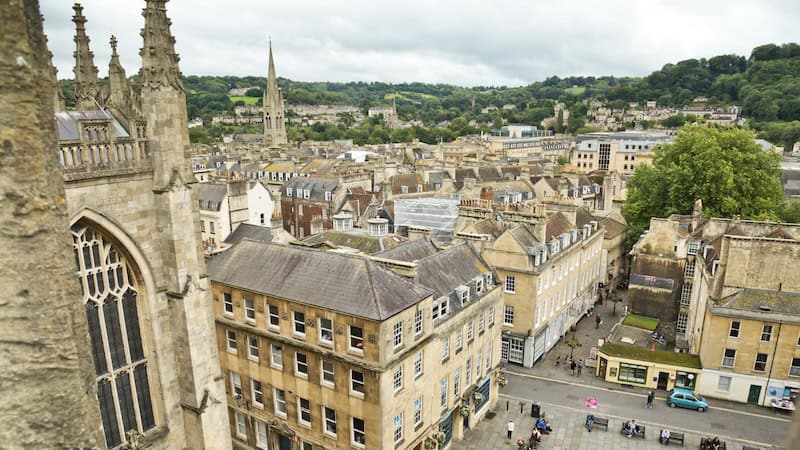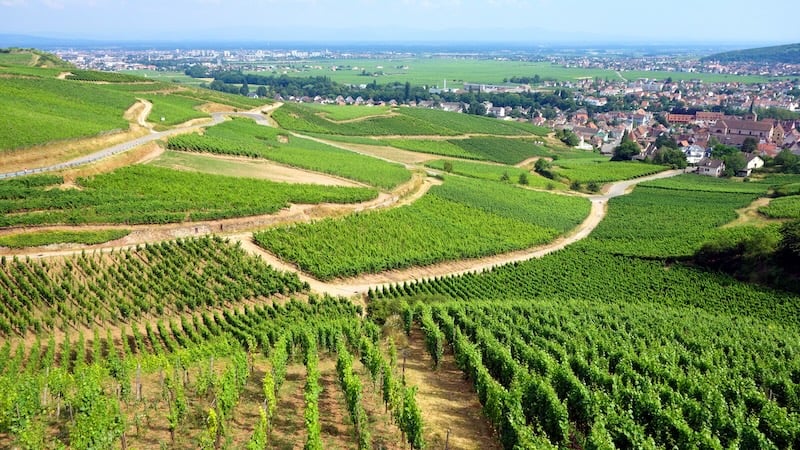The Other Side of the Outer Banks
Three natural areas offering a different perspective
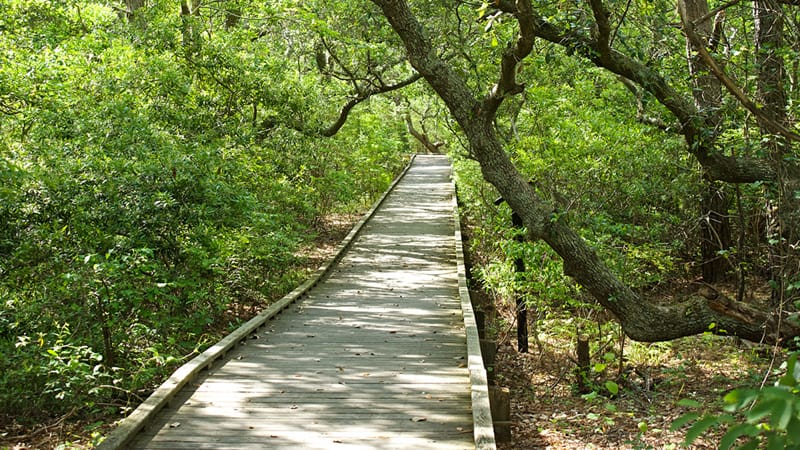
The beaches of the Outer Banks have a justifiable reputation as some of the best in the world. Soft sand, cool ocean temperatures and warm days make them perfect for vacationing.
But the beaches are just one part of what makes Outer Banks life so special. Away from the sand and surf is another side of the OBX to explore. The sound side offers lush forests, freshwater ponds, beautiful vistas and solitude.
Here are three natural areas worth exploring.
CURRITUCK BANKS ESTUARINE RESERVE
Located about a mile north of the village of Corolla, the Currituck Banks Reserve is a perfect introduction to the Outer Banks maritime forests. A boardwalk and an easily navigated trail both lead to Currituck Sound.
The parking lot for the trails is about a mile north of Currituck Beach Lighthouse. There is a gate at the parking lot – please close it. Corolla wild horses wander through the forest from time to time.
The Boardwalk (pictured above)
The handicapped-accessible boardwalk is a very easy 0.3-mile stroll to Currituck Sound. Sunlight filters through the trees, creating an extraordinary mosaic of colors.
- Loblolly and longleaf pine dominate the canopy, but the boardwalk crosses a seasonal marsh where red maple, cedar and sweet gum grow.
- A wide pier offers a panoramic view of Currituck Sound. Canada geese nest along the shoreline year-round. In the spring, geese and goslings float effortlessly on the water. Fall and winter brings the legendary waterfowl migration of the Currituck Sound.
- Wildflowers abound in spring and summer.
The Maritime Forest Trail
The Maritime Forest Trail is a 0.75-mile out-and-back trail that meanders through a remarkable live oak forest. With little or no underbrush and the only trees visible the live oak, there is a feeling of being in virgin forest. There is nothing else like it on the Outer Banks.
- Trail is suitable for anyone 7 years old and up, and a perfect introduction to the beauty of a maritime forest.
- The gnarled shape of the live oak is spectacular. Bring a camera.
- Features a very dense canopy. Robins and crows are most common, but vireos and wrens are seen as well, and an occasional squirrel.
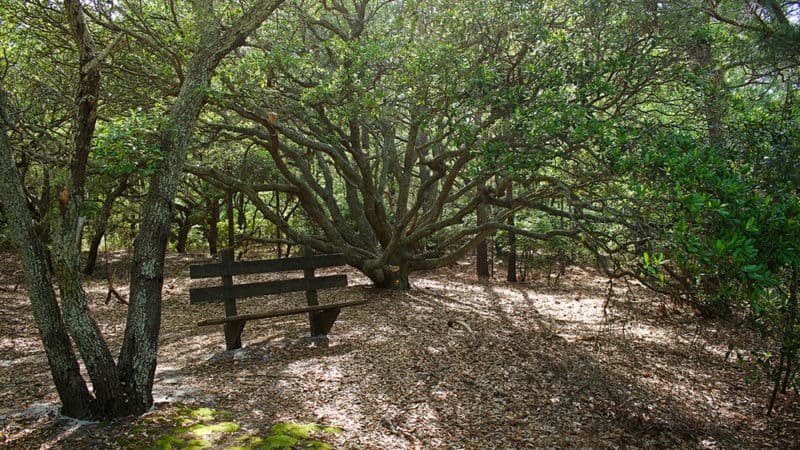
NAGS HEAD WOODS ECOLOGICAL PRESERVE
This Nature Conservancy land offers a fascinating look into how nature adapts. The rugged and steep hills are relict sand dunes that have been in place for thousands of years. As soil gathered on the dunes, trees took root.
The tops of the hills feel like a mountain forest with towering hardwood trees and pine. At the bottom of the hills, where runoff has gathered, marsh and wetland dominate, filled with lilies and maritime grasses.
The parking lot is in Kill Devil Hills off Ocean Acres Drive. Turn west at Pigman’s Barbecue. You’ll find trails with surprising elevation gains and others that offer an easy walk, including an ADA loop trail.
- The Center Trail is an easy quarter-mile trail.
- The paved ADA trail surrounds a beautiful freshwater pond. Yellow slider turtles love it. (ADA parking is limited.)
- Looking for more of a challenge? Take the Sweetgum Swamp Trail, a 2.25-mile trail with steep inclines and deep hillsides plunging to freshwater ponds at the bottom of the hill.
- Want to extend the challenge? The Blueberry Trail adds 1.5 miles to the journey.
- The half-mile Discovery Trail is suitable for almost anyone; it circles a freshwater pond.
- The Roanoke Trail connects to the Discovery Trail at the top of a small ridge and goes to Roanoke Sound, passing through what was once a small but thriving community.
- The ponds in the reserve are interdunal ponds. Generally, the deeper the pond, the clearer the water. At one time the ponds supplied the Outer Banks with water.
- Old Nags Head Road is a packed dirt road and provides a fantastic bike ride, moderately but not outrageously difficult, calling for fat tires and gears.
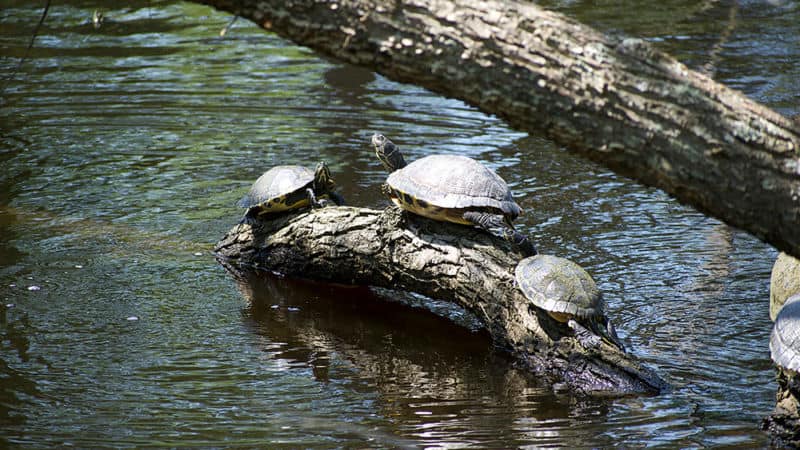
BUXTON WOODS
Located on Hatteras Island at the widest part of the Outer Banks between Buxton and Frisco, Buxton Woods is an extraordinary example of the merging of semi-tropical and temperate zones. This is as far north as dwarf palmetto grow, and they are everywhere.
The preserve is a series of relict sand dunes plunging to freshwater ponds and swamps. The ridges here are oriented east and west, unlike Nags Head Woods, where they run north and south.
Easiest access is at Old Doctor’s Road off NC 12. There is a small parking area with a map kiosk about 20 yards from the road.
- Buxton Woods is perfect for four-wheel drive exploration, with dirt roads offering glimpses of its beauty. The roads also offer easy trails for anyone who wants to stretch their legs.
- At the end of Old Doctor’s Road, Lookout Loop Trail is a moderately challenging but short hike. A couple of places on the trail look out over the ridges and valleys.
- The North Trail is fascinating, climbing over ridges and plunging into valleys, seemingly including all of the ecosystems of the reserve. It connects with a number of other trails.
- Some the best examples of dwarf palmetto are seen along the short West Trail that shares its trailhead with the North Trail. The trail connects with the Boundary Trail. When conditions have been wet, the trail quickly becomes impassable.
- Sitting on top of a huge freshwater lens, Buxton Woods shares protected areas with the Dare County Water Department, with the Boundary Trail between the water department and the reserve.
IF YOU GO
- Take water.
- May through mid-October, insect repellant is a must.
Get even more of the OBX scoop from Kip Tabb here!
Kip Tabb is a freelance journalist living on the Outer Banks. His articles on the history of Coastal North Carolina and environmental issues have been published in the Outer Banks Voice, Coastal Review Online and BOOMER. KipTabb@gmail.com
